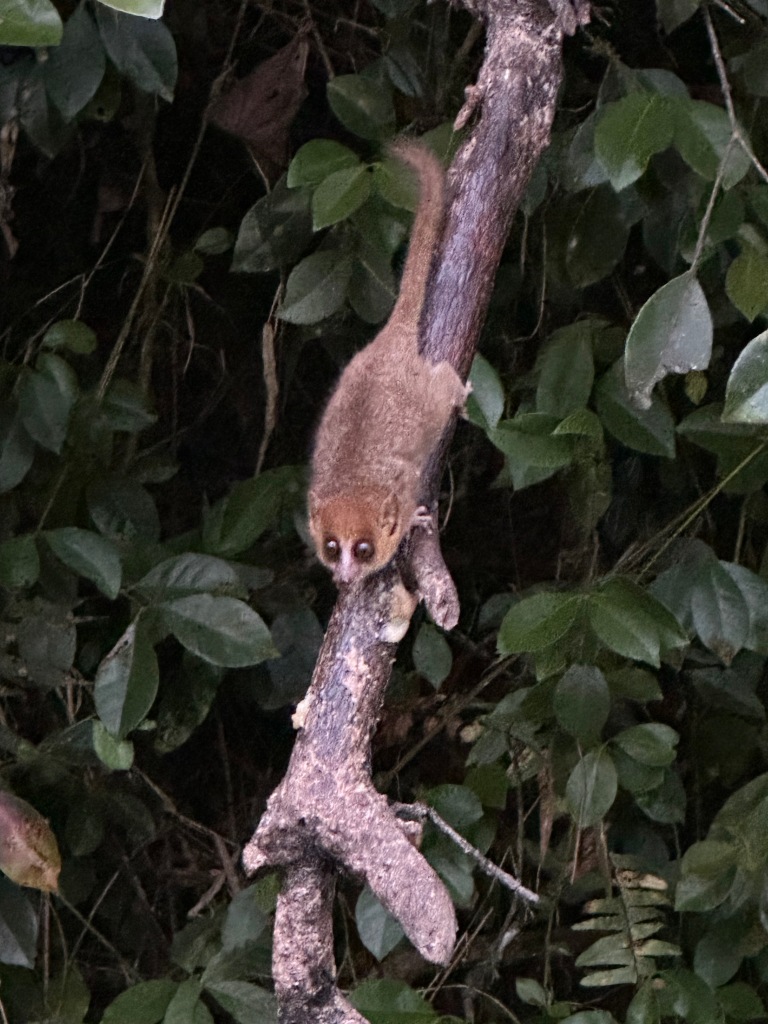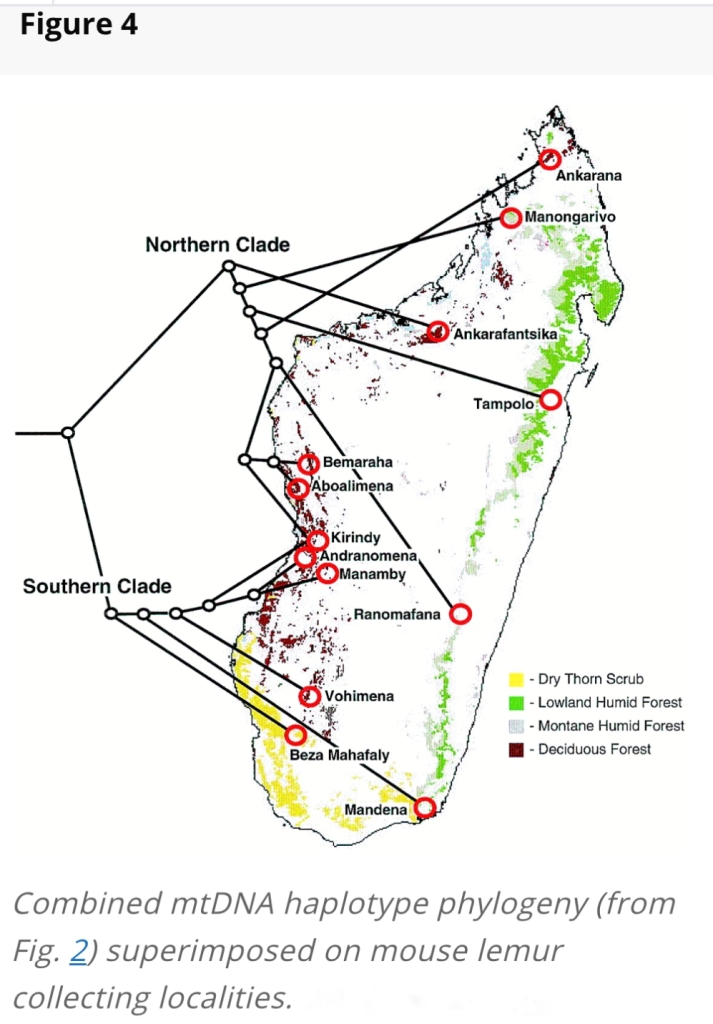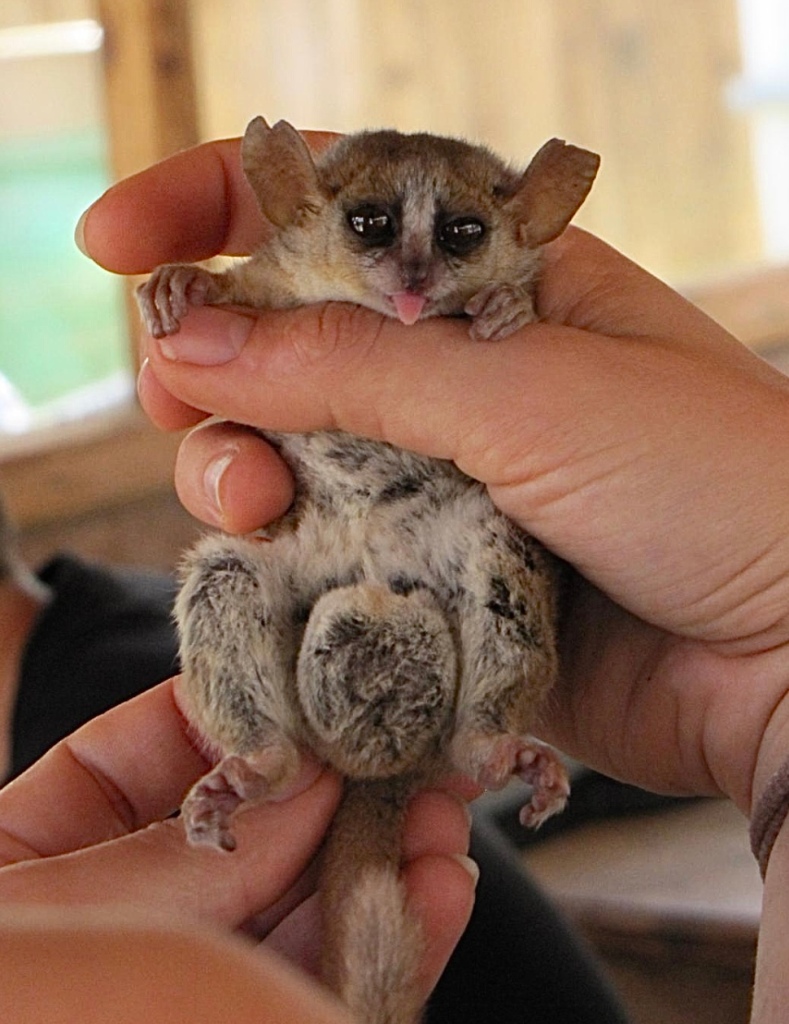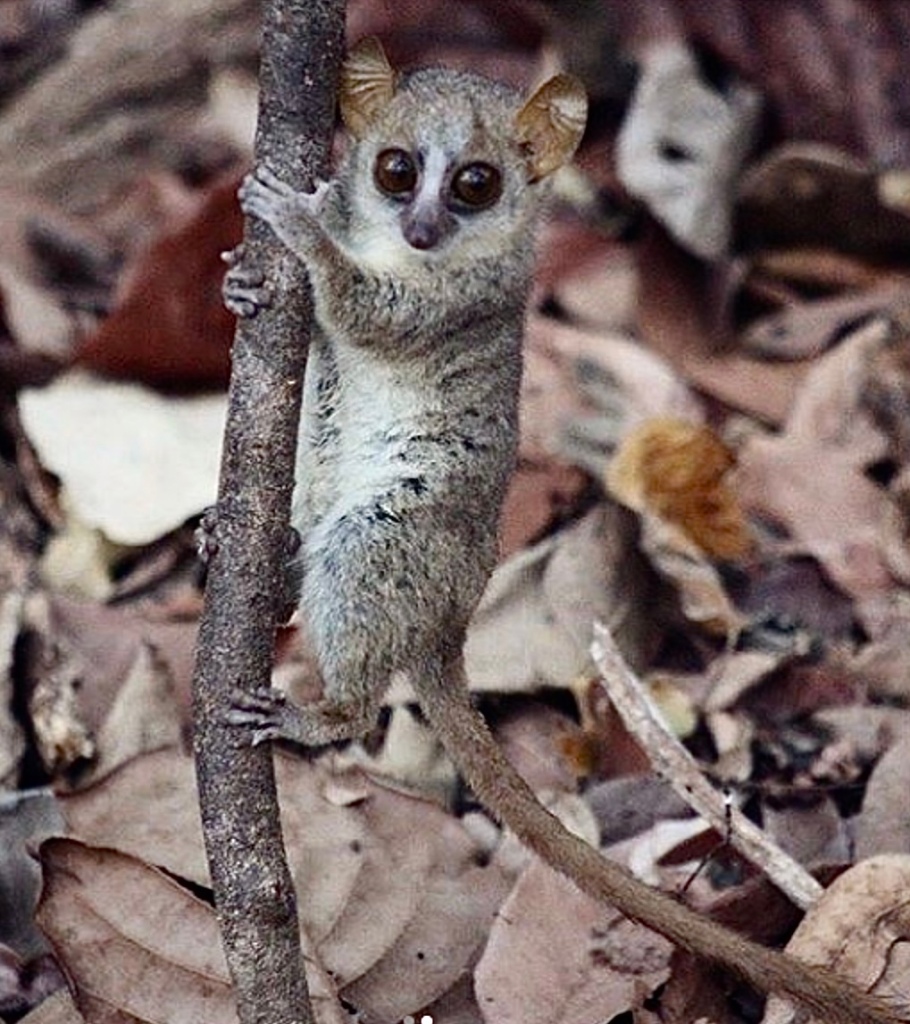Mouse lemurs are the smallest of all the primate species (even tinier than South America’s marmosets), and possess some special abilities not found in other primates.

What was initially thought (1970s) to be two species of mouse lemur in Madagascar, a gray one and a reddish-brown one, has subsequently exploded into an incredible diversity of mouse lemur species following recent DNA analysis of individuals from various sites throughout the country (somewhere between 12 and 24 species, depending on who is lumping and who is splitting).

Some characteristics of their natural history may help explain this diversity of mouse lemur species.
1. Obviously they are small animals, and consequently, they have very small home ranges —about 0.01 square miles, which is a patch about 500 X 500 feet. So, one theory is that mouse lemurs exploit and adapt to their local microclimate quite well, and their limited movement in the environment precludes them coming into contact with many other mouse lemur species (I.e., barriers to gene flow). Within their local micro habitat, they are generalist consumers, specializing in whatever is available: insects, fruit, flowers, nectar, seeds, vegetation. Thus, it is even possible for sympatric (same environment) speciation to occur when mouse lemurs begin to specialize in food types.
2. Mouse lemurs are very sexy animals, by which I mean they mate A LOT during the breeding season: males mate with many females, and females mate with many males, often one right after the other. But females will reject a mating with the same male twice. In addition, in another strange twist, males develop very large testes during the breeding season, significantly larger than in non-breeding condition. And some researchers believe that sperm competition in the females’ reproductive tract may also be responsible for their rapid speciation.

These delightful little lemurs have more secrets to tell, but that has to wait for another post. In the meantime check out what the Duke University Lemur Center has been doing over the last 35 years to further our understanding of lemur biology and conservation efforts in Madagascar.
Duke University Lemur Center and. Lemur research at Duke University


Wow! Busy little guys, huh? Thanks for the informative post.
Nature and adaptation is amazing!! The mouse lemurs are so cute!
Nature and adaptation is amazing!!
Interesting. You learn something new every day!!